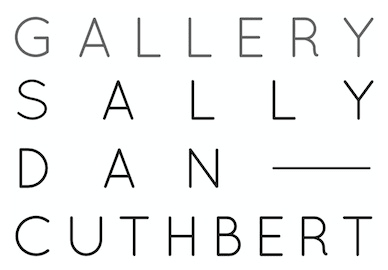Fire, wind and water
1989
triptych: oil on canvas
3 Panels: each 240.5 x 124.0 x 4.4 cm
Purchased: 1989
Location: Naala Badu, lower level 1
Marion Borgelt has consistently brought to the viewer a means to understanding the relationships between culture and nature, whether through language and symbolism, land works such as mazes, or through the inclusion of opposing elements such as light and dark, masculine and feminine. Although best known as a painter, she has created major works in other media including installation, sculpture and site-specific art.
For over three decades Borgelt has pursued an interest in signs and symbols, including Celtic, Gaelic and other language forms, and still incorporates a lexicon of archaic motifs. The evolution of Borgelt’s work, from an abstract expressionist approach rooted in a tradition of spontaneous, expressive mark-making to a more intellectual symbolic language, occurred during a period in Paris from 1989–98. Paintings from this period are represented in the AGNSW’s collection: ‘Fire, wind and water’ from 1989 and ‘Void series nos XI, XII, XIII’ from 1992.
In ‘Fire, wind and water’ the three elements are represented not as singular forms but are instead combined and twisted in a violent turmoil with each other. Although the forces of each element are compressed into a gestural form of webbing and weaving, the very opposition of each is repellent. This duality of attracting and repelling leads the elements on a whirling and dangerous journey as they clash and interweave across the canvas. During the 1990s Borgelt utilised the symbolic interplay in ‘Fire, wind and water’ in an increasingly focused way.
Painted while in Paris, ‘Void series nos XI, XII, XIII’ is one of Borgelt’s early forays into a visual language that explores both the specificity and universality of primal symbolism. Influenced at the time by Jungian theories of the ‘anima’ and ‘animus’ (a kind of yin-yang duality) and the space between order and chaos, the psychological and physical duality of inside and outside is apparent within the ovoid shapes. The darkened centre lines recall Lucio Fontana’s sensual slits in the canvas, which Borgelt has increasingly incorporated into her work, and reveal a hint of mystical innerness, as if something may emerge from or enter the void. The repetitive oval symbols become cocoon-like or vaginal, evoking themes of intercourse and birth or the creation myth in which the sun comes forth and emerges from the mystical cosmic egg.1 The unsealed white pigment is rubbed on by hand in an act, Borgelt considers, of cleansing, purification and reintegration, reinforcing the bodily nature of the work.
1. The mystical cosmic egg is a recurring motif in creation myths from a number of cultures, for example Hinduism, mysticism and Egyptian mythology
August 18, 2024
